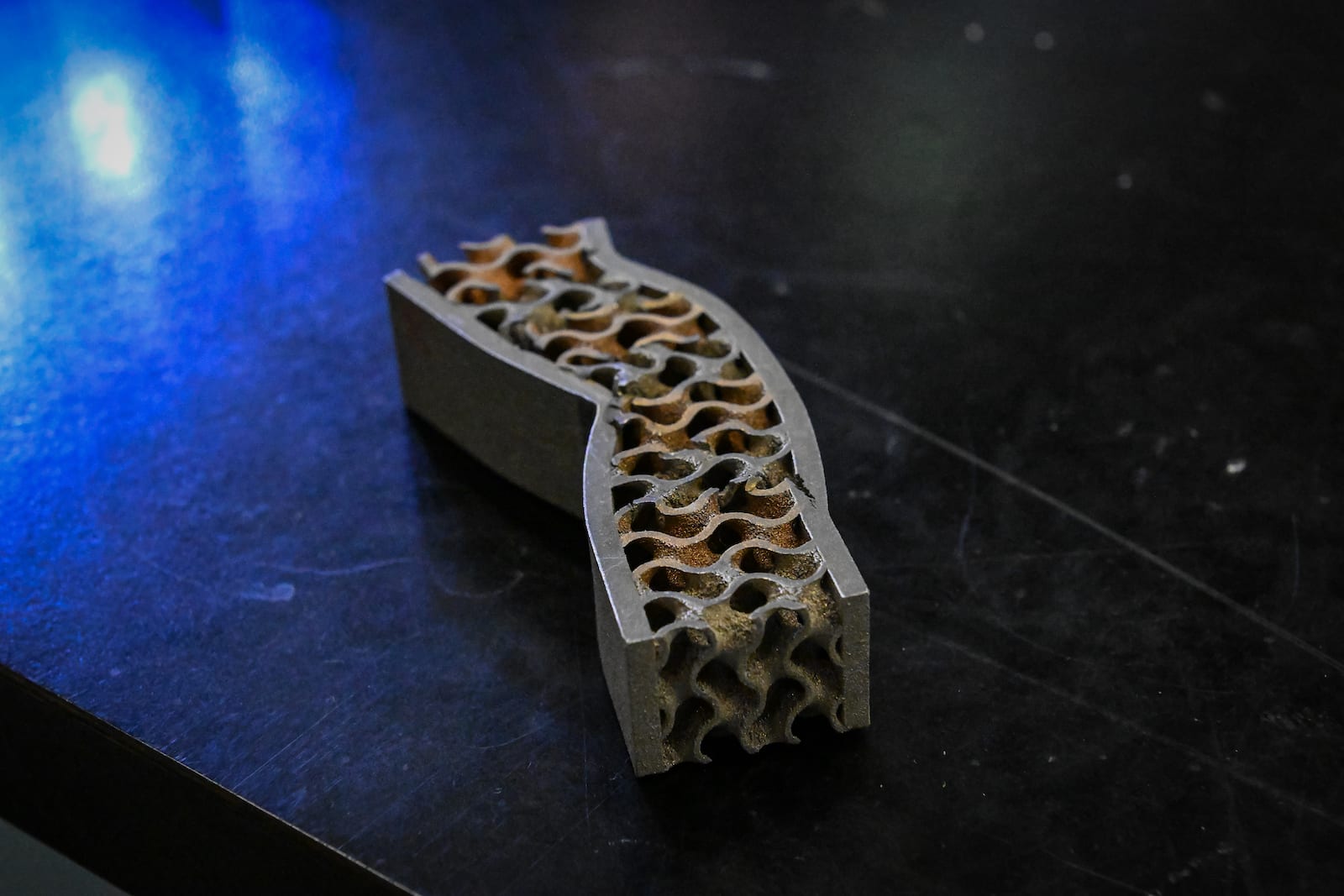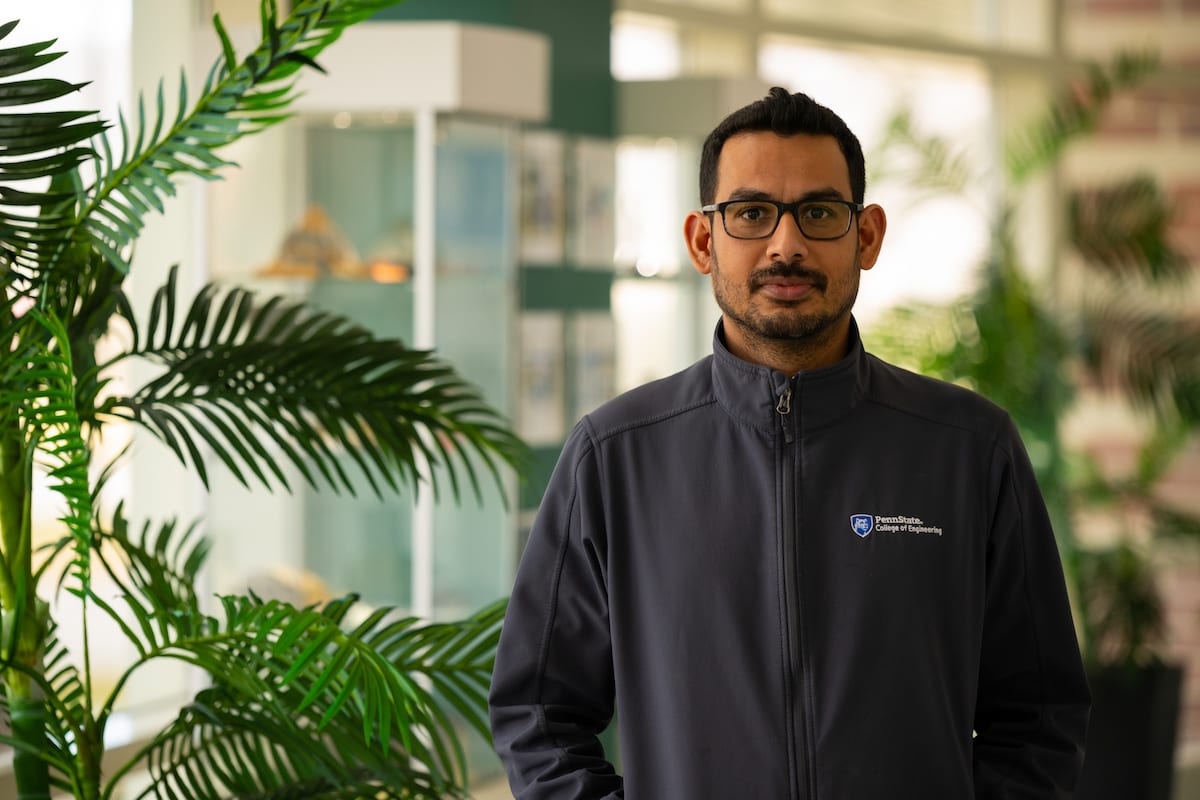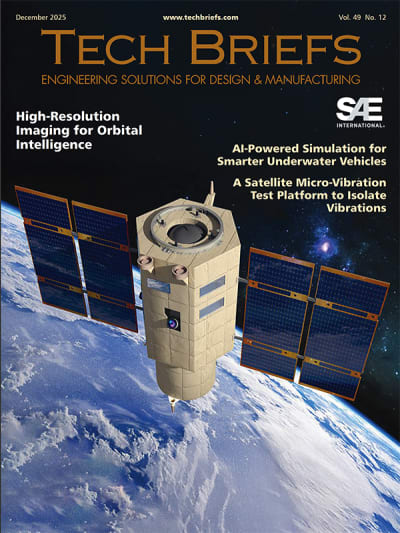
Tech Briefs: What got you started on this project?
Guhaprasanna “Guha” Manogharan: I've been involved in advanced manufacturing as a user, researcher, and educator for a long time, and I always try to have a balance of fundamental research and applied research. So, in my group, we are working on fundamental research questions that would solve a problem an end user could implement in the next three to five years.
I've been involved in additive manufacturing for the last 20 years or so, since the time it used to be called rapid prototyping. In the early years, it was only developed for prototyping purposes. Typically, it was with polymers; then metal additive manufacturing came along. It has been helped by serious investments from the government through institutes such as America Makes, DoD, DoE, and NSF, and it's come a long way.

One particular area of interest for any engineer — mechanical, materials, civil, biomedical — is the tug of war between getting the right properties through the manufacturing process vs. the inherent properties of the material. For example, whether you're printing with aluminum vs. steel or nickel, or using stamping or any other manufacturing process.
For the last several years, there has been a concept called functionally graded material. It's often laser-based powder cladding, where you gradually go from 100 percent of alloy A to 100 percent of alloy B by grading the material function. For example, you can print a material that is very strong, but then you can gradually add a corrosion-resistant material on the outside surfaces. You can think of that method as being like laser welding, but instead of using one uniform material as your feed, you change the material as you go. But, you cannot produce the final part without a lot of post-processing — you cannot get anything that has really fine detail.
So, what got us started in this research direction is this tug of war between materials and design freedom.
Directed energy deposition is an existing process in which a laser or plasma serves as an energy source, and you simultaneously deliver powder at the same time. That enables you to make a bulk part very quickly, but then you have to go back and machine it. And, even so, you can only make basic parts that look like an hourglass or a pipe, you cannot make very intricate geometry.
There is another process called laser powder bed fusion (LPBF), which is similar to your office printer. Instead of a sheet of paper, you spread a layer of powder onto a plate. And, instead of ink, you use a laser to melt exactly what you want. Then you move the plate down for the next roll of powder. Within a single layer it has been always one material — only aluminum, or only steel, or only nickel, or only tungsten.
Tech Briefs: Is this basically an established process?
Manogharan: “Standard” single material LPBF is an established process that is very widely used by defense, biomedical, and automotive companies. The entire workflow is well-established, and the powder supply chain has gotten a lot better. But, all of this is for a single material. Things to be mindful of are how fine is the material of the part you want to print, how do you account for surface roughness, and so forth — these are some process constraints. But, people have always wanted to do multiple materials together. A few have tried multiple materials, but what they have done is print one alloy, then switch the powder and go to another material, often only across layers.
But, now with our multi-material manufacturing method (MM-LPBF), we have the ability to do multiple powders in the same layer, which is an absolute game-changer because you get the best of both worlds. You can make very precise geometry with very high resolution, and you also get control over which material goes where.
Tech Briefs: What's the difference between using multiple materials and just making different alloys?
Manogharan: When I say multiple materials, I'm talking about having multiple materials purposefully placed inside a single 3D part. We can have different powders such as steel, nickel, aluminum, basically any material in powder form, selectively deposited. Think of it as like building a complex house, but each interlocking brick could be a different material.
Tech Briefs: I see. So, you're creating a structure with different metals in different locations?
Manogharan: Yes, it’s a single structure made from multiple materials. This is kind of like the previous laser cladding processes, where they were trying to increase material complexity in simple geometries. But, we want to achieve both material and design complexity through MM-LPBF.
In one example from our lab, we used three different materials. The three materials are put into three different buckets, and we precisely control which drum places which material at which location on a single layer. Once you’ve deposited the powder, you can go back and use the laser to create the shapes you need.
Tech Briefs: Does this mean that by combining materials, you can design different properties for different parts of the complex object you are building?
Manogharan: Yes, we can control the deposition of powders, basically different materials, precisely within a single layer and also across layers. In this way we can concurrently take advantage of the design complexity that LPBF offers with a single material but enhance the functionality by using multiple materials for new applications that people had not been able to think of because they could only print it with steel or only with copper.
Tech Briefs: So, by combining materials, you can design different properties by choosing different metals?
Manogharan: Yes, but not only that, you can change the shape of a part. Ordinarily, when you change the shape of a part, you will also have to think about the mechanical properties or the electrical properties, the engineering functions of it.
But, if you can change which material goes where, your design will change. Let's say I want to have good mechanical properties and good thermal properties at the same time. You can change the shape and the amount of steel vs. copper you use based on these criteria. Then you can add additional constraints — for example, the maximum weight. So, you can move both sides of the equation. You can change the shape, or you can change which material goes where, or both. Right now, we can do up to three materials, but theoretically as many as you want. I think this is a real game-changer for the design and manufacturing community.
Tech Briefs: Have you developed custom software for this?
Manogharan: We don't have commercial software yet, but we are working on the algorithms.
Tech Briefs: So, you could say through the software, I want this property here and that property there?
Manogharan: Exactly. For example, if we want a particular weight to be maintained, but also have very good thermal conductivity, we need more copper than steel.
So, let's say you want to design a wrench for use in an application where weight is important, but at the same time the strength is also important — let's say we want to come up with a wrench that is used in the space station. Do we want to make the entire wrench out of a material like forged steel? Or, do we want to change to a lighter material in the handle so you get the best of the properties you want at the location you want — reducing weight, or reducing material, or increasing other properties?
There are also biomedical applications. We have several examples of printed implants. So, should we make them entirely out of zinc and magnesium because they are good for bone growth? No, because they are not as strong as titanium, and they will continually biodegrade. You don't know how quickly your body will start absorbing it and cause you to lose your mechanical stability. So, this is a good application. We are starting a project on how to print titanium implants, but to selectively place zinc and magnesium where they will come in contact with the bone.
Our paper was included in the March 4, 2025 issue of npj Advanced Manufacturing.

